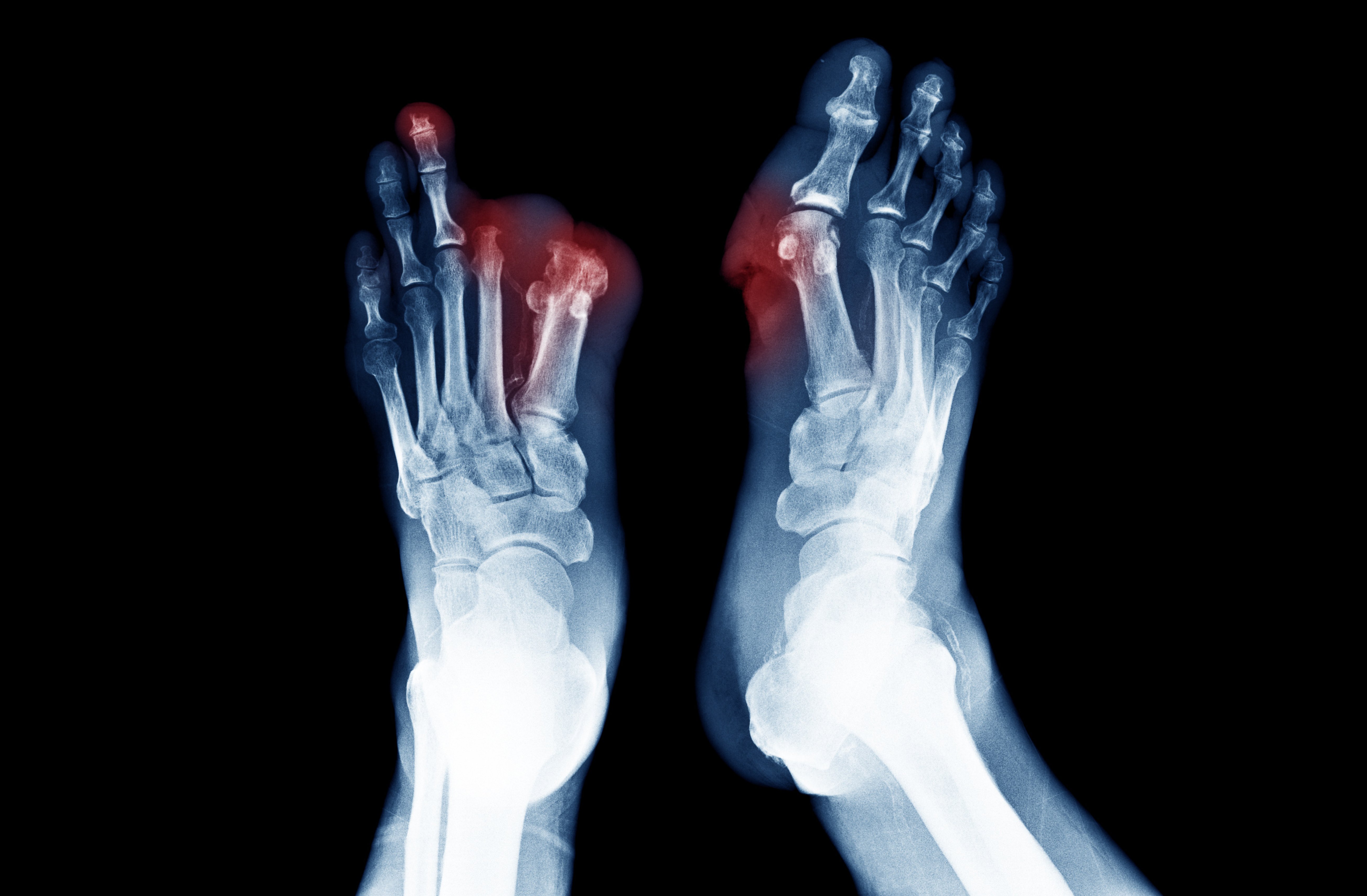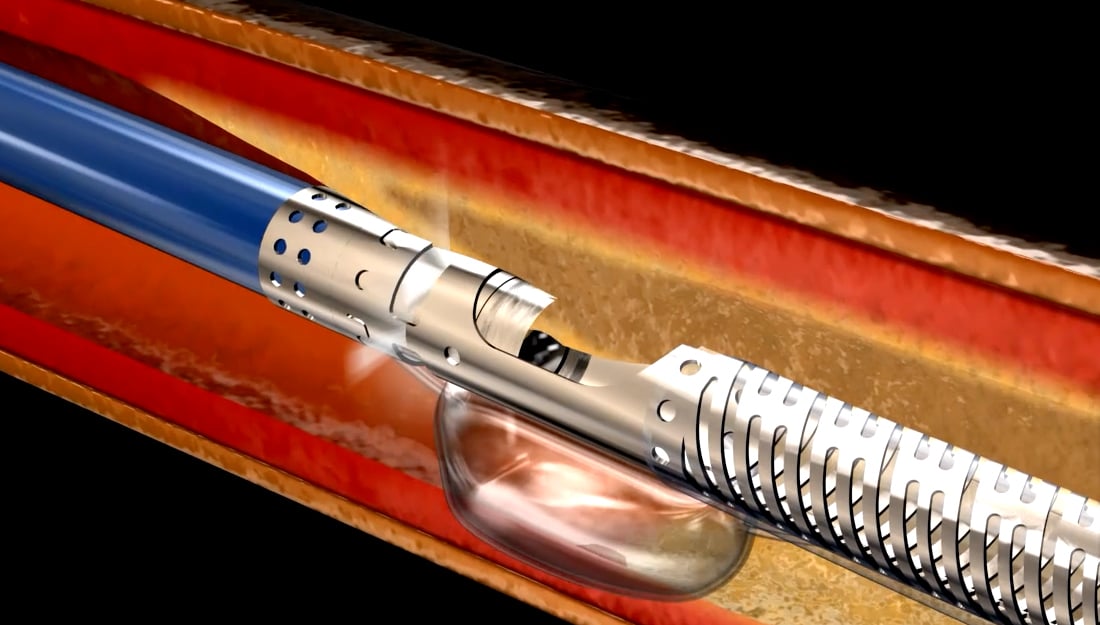Topics: Peripheral Artery Disease, Atherosclerosis
Peripheral Artery Disease (PAD) is a common circulatory problem in which plaque builds up inside the arteries and obstructs blood flow to the lower limbs and feet. Arteries are the blood vessels that carry oxygen and nutrient-rich blood from the heart to all areas of the body.
Don’t confuse the plaque of the teeth (dental plaque, caused by bacteria buildup) with atheroma, which is the technical term for the plaque that forms deposits in a person’s arteries. This plaque is formed by such substances as excessive fat, cholesterol, inflammatory cells, proteins and calcium floating through the bloodstream.
PAD occurs in the arteries that carry blood to the arms and legs which is why it’s called “peripheral” artery disease. When this plaque buildup occurs in the heart, it’s called coronary artery disease.
People with PAD develop atherosclerosis, which means the arteries slowly become narrowed or blocked as this plaque gradually forms inside the artery walls. The narrower the arteries, the less blood can get through to nourish organs and other tissues, causing gradual damage to the tissues and eventually tissue death.
When this happens, patients who have developed PAD usually notice hip, leg or calf pain (called claudication) when walking.
Sign and Symptoms of PAD
- Painful cramping in the hip, thigh or calf muscles after walking or climbing stairs
- Leg numbness or weakness
- Coldness in a lower leg or foot, especially when compared to the other leg
- Sores on the toes, feet or legs that will not heal (especially a black/discolored toe)
- A change in the color of the legs
- Hair loss on the feet and legs
- Erectile dysfunction in men
If undiagnosed and/or untreated, PAD symptoms will continue to worsen. There may be leg pain while resting or lying down which may be intense enough to disrupt sleep.1 In more advanced cases, non-healing ulcers or open sores that do not heal will develop. Diabetics in particular will be prone to infections in one or both feet (called “diabetic foot”).2
Critical limb ischemia (CLI) is the extreme state of this condition and can cause gangrene (tissue death). If gangrene develops and blood flow is not restored, amputation of the limb may be necessary.3
Diagnosis for PAD
Common tests that physicians may rely on to diagnose peripheral artery disease include:
Physical Exam
During a physical examination, a physician may find such indicators as a weak or absent pulse below a narrowed area of the artery, "whooshing" sounds (bruits) over the arteries that can be heard with a stethoscope, evidence of poor wound healing in the area where the blood flow is restricted, and decreased blood pressure in the affected limb.
Ultrasound
Special ultrasound imaging techniques such as Doppler ultrasound or duplex scanning help physicians evaluate blood flow through the blood vessels and identify blocked or narrowed arteries.
Blood Tests
A sample of a patient’s blood can be used to measure his or her cholesterol and check levels of the substances homocysteine and C-reactive protein (CRP), which are indicators of PAD.
Ankle-Brachial Index (ABI)
ABI is one of the most common tests used to diagnose PAD. The ABI test compares the blood pressure in the patient’s ankle with the blood pressure in the arm. To get a blood pressure reading, the physician uses a regular blood pressure cuff and a special ultrasound device to evaluate blood pressure and flow.
Angiogram
By injecting a dye (contrast material) into the patient’s bloodstream, the physician is able to trace the flow of the contrast through the arteries in order to determine the level of blood flow. The physician may use imaging techniques such as X-ray, Magnetic Resonance Angiography (MRA) or Computerized Tomography Angiography (CTA). An angiogram is a minimally invasive procedure.
What Puts You at Risk for PAD?
- Smoking
- Obesity (body mass index over 30)
- High blood pressure (140/90 millimeters of mercury or higher)
- High cholesterol (total blood cholesterol over 240 milligrams per deciliter or 6.2 millimoles per liter)
- Increasing age, especially after reaching 50 years of age
- A family history of peripheral artery disease, heart disease or stroke
- Excess levels of homocysteine, a protein component that helps build and maintain tissue
- Excess levels of C-reactive protein (CRP), a general marker of inflammation
- Diabetes
Treatment Options
Although PAD cannot be cured, medication and lifestyle changes may help slow the progression of the disease.
However, if the blood flow in one of a patient’s limbs is completely or almost completely blocked, there are several treatment options that can be implemented to help improve the blood circulation to the legs and a patient’s ability to walk.
Balloon Angioplasty
To open a narrowed artery, a catheter with a very small balloon on its tip is placed in the artery and is advanced to reach the narrowed or blocked artery. The doctor then inflates the balloon, which pushes aside the plaque that has built up against the vessel walls. The balloon is then inflated and deflated several times to open the vessel.
Stenting
A stent is a small, metal scaffold that is placed inside an artery. Similar to balloon angioplasty, stents restore blood flow by pushing the plaque to the side. A stent will remain inside the artery forever. Stenting often follows balloon angioplasty as an additional treatment to help the vessel remain open.Bypass
Surgical bypass treats narrowed arteries by directly creating a detour, or bypass, around the blocked section of the artery. During a bypass procedure, a physician creates a new pathway for blood flow using a graft, which can be a portion of a vein or a synthetic tube that connects above and below a blockage to allow blood to flow around it.
Atherectomy
Atherectomy is a minimally-invasive method of removing plaque to re-open arteries. Unlike angioplasty and stenting which are designed to squish plaque to the side, atherectomy involves removing the plaque from the artery entirely.
Lumivascular Technology
A study has shown that in the options listed above, injury inside the artery affected over 50% of patients. This study also suggested that injury is the primary cause of the re-narrowing of the artery within a year, which may lead to the need for future procedures.
Unlike the above techniques that only use x-ray images, Lumivascular Technology involves a miniature camera-like system being inserted into the artery, allowing the physician to clearly see the blockage. This direct visualization enables the physician to remove the blockage without injuring the inside of the arteries
The second benefit of a Lumivascular atherectomy is that the physician is able to identify and remove more blockage that was not visible by x-ray alone.
Amputation: The Last Resort
Typically, an amputation is performed only as a last resort if those options have proven ineffective. Amputation is a procedure in which a physician removes a limb, or part of a limb, that is causing great pain or is threatening the patient's health because of extensive infection or tissue death. Most commonly, a toe, foot, leg, or arm is amputated. PAD is the leading cause of amputation in people age 50 and older, especially in diabetics.
As with all other diseases, the earlier PAD is found, the earlier it can be treated with medication and lifestyle changes. This is one reason why a yearly health checkup is essential.
Conclusion:
If you or a loved one are experiencing symptoms of PAD, a Lumivascular atherectomy may be the best option for you. A Lumivascular atherectomy helps your doctor see inside your artery and safely remove plaque and restoring blood flow to your legs and feet.
Take Action:
- Find a Lumivascular physician in your area
- Learn more about Lumivascular atherectomy
If you have found this article helpful, please don’t forget to share







